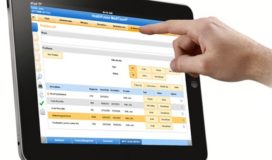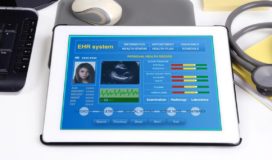Electronic Medical Record
Electronic medical records or EMR simply means the scanned digital version of the paper medical record of an individual. The electronic medical record represents a medical record of a patient within a single facility such as a doctor’s clinic or an office. EMR is the digital records that doctors or the organizations maintain for their patients to keep a track of their treatment and current health condition.
Information That Electronic Medical Record Generally Holds
- Personal Information: EMR stores detailed information of the patient such as height, weight, and blood group etc.
- Patient’s Medical History: The physicians are always keen to know about the previous medical history of their patient on behalf of what they can provide more effective treatment further. EMR contains the information about the previous ailments, medications, and allergies of the patient which helps the doctors to study their patients more effectively.
- List of Diagnoses: The information about the current treatment and medication of the patient is also stored in the EMRs. This helps the physicians to make necessary decisions after going through the current health conditions.
All the above-mentioned information of the person integrates with the physician’s practice management software system that handles scheduling and billing.
Types of EMR
- Server Based EMR: This is typically located at the practice premises on a specialized computer called “Server”.
- Web-based EMR: This is generally located at the offsite on the EMR Company’s server which the medical practitioner accesses with the help of an internet connection. It is also known as software or application service provider.
Benefits of Electronic Medical Records
- More legible and accurate data: As the data in the EMR is stored on the system so it provides more legible and clearer patient’s health chart.
- Easy to access information easily: All the information stored on the system can be accessed from anywhere.
- Enhance documentation: The EMR system enhances the documentation by giving access to digital imaging and special testing.
- Better integration between the clinic and billing departments: There are lesser chances of mistakes and frauds in the billing after the adoption of this system.
- Improves efficiency and communication: EMR is very helpful for the physicians in making important decisions for the treatment of the patient as all the information can be shared in real time, thereby improving the communication process as well.
- Enhanced patient’s safety: EMR not only stores the current condition but also the important medical history of the patient. This further helps in providing better and more secured treatment to the patient.
- Improved tracking of the lab information: All the lab tests and their results are available on the system allowing physicians as well as the patients to go through the medical or lab reports more quickly.
- Tracking of Trends: EMR keeps the physician aware of the current conditions and trends of the health of the patient by providing details about the blood pressure, sugar level or intraocular pressures.
- Cost Effective: EMR is managed by the system which reduces the time and the labor involved in the management of these records.
Sources:
Health IT



